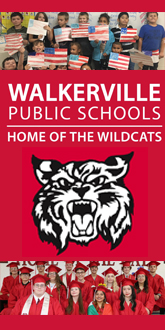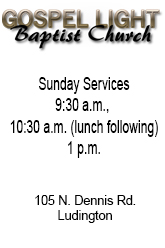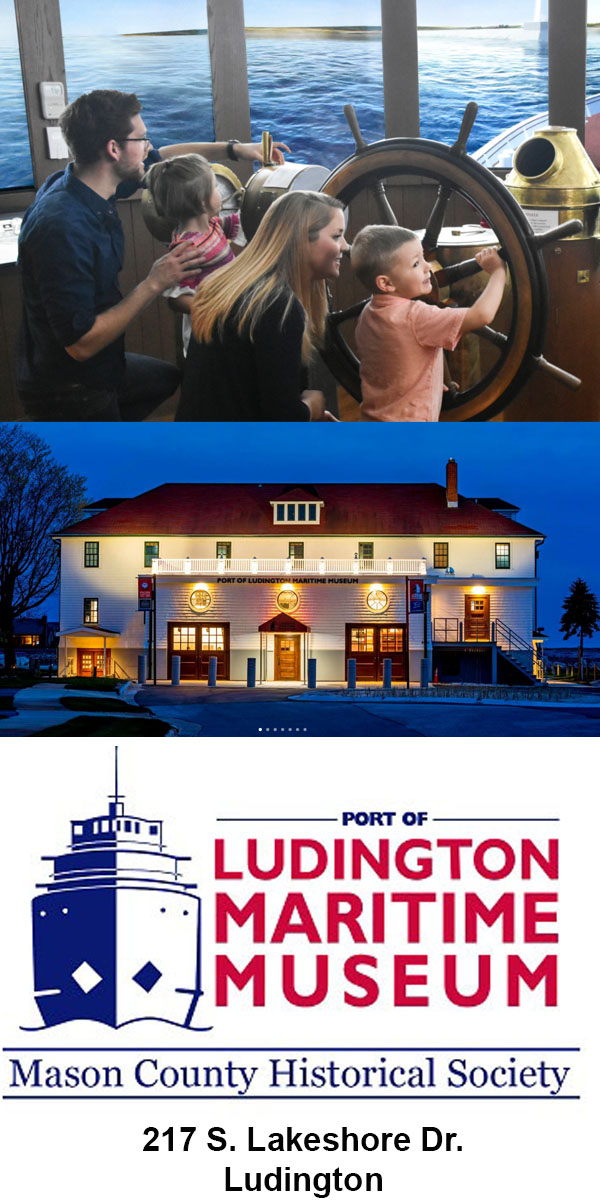
Contributed photo from 2019-2020 school year.
Pirate News: Students going full STEAM ahead in tech world.
Pirate News is a service of Hart Public Schools in cooperation with Oceana County Press.
By Allison Scarbrough, Editor.
HART — Spitler Elementary School students are on the cutting edge of technology as they explore robots and drones in their STEAM program.
 STEAM stands for Science, Technology, Engineering, Art and Math.
STEAM stands for Science, Technology, Engineering, Art and Math.
“I was put into a technology special, and after a couple months, I was bored because the kids were just coming doing typing. It was silent; it was dark; they weren’t interacting,” said STEAM teacher Sarah Schmalz. “One day, one of the tech guys came in, and I said, ‘I really want to be doing that kind of technology, because I was looking at the Dash and Dots that Project Focus was storing in my room. And they said, ‘Oh we’ve been waiting for somebody to say that,’ and that’s kind of where it started.

STEAM teacher Sarah Schmalz with her portable classroom for the 2020-2021 school year.
“I started with a few robots that year, and after that, I talked to Amy (Taranko — who was the principal at the time), and I said, ‘I am really liking the group aspect; I’m liking how the kids are so engaged; and they’re so excited about everything that’s going on. I’d like to switch it from technology to STEAM. And she said, ‘Go for it.'”

Contributed photo from 2019-2020 school year.
This is the K-4 program’s third year at Spitler, and it is widely popular among the young students. The first two years it was STEM, but this year an art section was included for first grade which added the “A” to the name.
Schmalz’s husband, Mike, owns an IT company, and has been instrumental in the program. “I asked him, ‘What are you looking for when you get an employee? What kind of skills do you want them to have that I can be fostering here at this level?’ He said, ‘They need to be able to work with other people; they need to be able to problem solve on their own; they need to be able to do minor repairs or at least understand how things work,’ so that’s where a lot of this stuff got started.”
 Problem solving and team work come into play in just about every STEAM project. Kids who may not have gotten along very well before are now figuring out how to make it work. “I’ve seen a lot things get resolved.”
Problem solving and team work come into play in just about every STEAM project. Kids who may not have gotten along very well before are now figuring out how to make it work. “I’ve seen a lot things get resolved.”
Schmalz did tech teacher meetings at the Muskegon Area Intermediate School District (MAISD). “That has been a phenomenal collaboration,” she said. “We had meetings with all of the tech teachers from Muskegon and now quite a few from Oceana County as well through REMC — we are all one REMC (Regional Education Media Center).
 “It not only focuses on the ‘what,’ but it focuses on the ‘how,’ and the kids really get to explore and use creativity. In keeping with the Hart Pirate theme, students are making pirate ships, telescopes and maps using recyclable materials. One criteria for their ships is that the flag must be able to move up and down the pole. So, kids have to figure out the engineering behind creating that mechanism. The telescope also has to be able to expand out and back in.
“It not only focuses on the ‘what,’ but it focuses on the ‘how,’ and the kids really get to explore and use creativity. In keeping with the Hart Pirate theme, students are making pirate ships, telescopes and maps using recyclable materials. One criteria for their ships is that the flag must be able to move up and down the pole. So, kids have to figure out the engineering behind creating that mechanism. The telescope also has to be able to expand out and back in.
Students must journal their projects, and they receive gold coins for their journal entries. At the completion of the project, they receive pirate names.
 “They walk the down the hallway so proud of their creations that they get to take home,” said Principal Andrea Degen. And they know the technical terms to explain how it was created. “It’s an amazing opportunity for students to grow and explore,” said Degen.
“They walk the down the hallway so proud of their creations that they get to take home,” said Principal Andrea Degen. And they know the technical terms to explain how it was created. “It’s an amazing opportunity for students to grow and explore,” said Degen.
They use 3-D printers to create cool 3-D models while integrating technology, engineering, math, art and other subjects. “They have to give them to a staff member, and they write a letter to the staff person. So, it’s kind of a community building thing. Then, they get to deliver it to the staff person.”

Contributed photo from 2019-2020 school year.
Robots are one of the most popular components of the unique class. They begin using robots in second grade with Cody the “Codeapiller.” More advanced coding continues with the higher grade levels.
The class seems to resonate with kids who are not usually the highest academically-performing students. “It’s usually the kids that struggle with the academics that really shine in here, because their brains are more geared for that.”

Contributed photo from 2019-2020 school year.
“If they’re struggling to keep it together — with core curriculum — but yet here they can kind of just let it all out with their creativity,” said Principal Degen.
In subject areas that have traditionally been male-dominated, both genders are benefitting with STEAM. “The girls are just as excited as the boys,” said Schmalz. “I don’t see a difference between boys and girls in my class at all.”
One project included dismantling a large flat screen TV. “We took our tools and took it apart,” said Schmalz. We got into the guts of the TV, and we found circuits; we found batteries; and we found lights; and we saw how all of that stuff was in there and how it all worked together.”
 Schmalz has developed a “Maker Space” in her classroom with shelves and drawers containing various materials, such as buttons, empty toilet paper rolls and cardboard boxes, used for creating projects. The kids get really creative with this opportunity and sometimes make projects so large that it’s questionable if they can even get them on the school bus to take them home. Mom or Dad often pick them up from school to transport the new creation back home.
Schmalz has developed a “Maker Space” in her classroom with shelves and drawers containing various materials, such as buttons, empty toilet paper rolls and cardboard boxes, used for creating projects. The kids get really creative with this opportunity and sometimes make projects so large that it’s questionable if they can even get them on the school bus to take them home. Mom or Dad often pick them up from school to transport the new creation back home.
The Lil’ Pirates really reach for the stars in STEAM when they learn about aerospace. “In kindergarten, they start with parachutes, and then in first grade, they move onto gliders. In second grade, they do paper airplanes.” The paper airplanes are equipped with battery-powered motors. “They take them outside, and they just go.”

Contributed photo from 2019-2020 school year.
Students also get to work with drones, some of which are programmed with their Chromebooks. “Through Bluetooth, it goes to the drone. So, it’s kind of the same idea as when they program the robots but this flies.
“We talk about different careers you have in aerospace — all different things, trying to relate it back to agriculture.” Hart is the county seat of the Oceana, a community built on agriculture.
Hart High School recently added a robotics team, so the elementary school’s STEAM program serves as a springboard into the higher grade level’s academic activity, said Degen. Hart Middle School is in the process of building a STEAM program, too, so the opportunities will carry over in all three buildings. “It will make this a progression from kindergarten all the way up.”

Contributed photo from 2019-2020 school year.
Students participate in stop motion animation with clay figures. Part of the learning process includes watching the most famous claymation character ever — Gumby. “They get to make their own background and their own characters and usually do a 30-second film.”
The kids build their own video games using Mattel-brand Bloxels. “You take the blocks, and different colors mean different things, and when you take a picture of it with the app, and it makes it a game. Then, they can play their own game.”
Plans are to add underwater robotics by utilizing local businesses’ indoor swimming pools.

STEAM “Maker Space” area.
Local business GHSP provided STEAM with a grant to purchase a Makey Makey classroom set valued at $800. Makey Makey is an invention kit designed to connect everyday objects to computer keys. Using a circuit board, alligator clips, and a USB cable, closed loop electrical signals send the computer a keyboard stroke or mouse click signal. So, you can make a banana into your space bar – perfect for a funny video.
With COVID-19 restrictions in schools, STEAM has met a few challenges. But Schmalz uses her own problem-solving and creativity skills to adapt. Instead of the kids coming into the STEAM classroom, she brings the STEAM classroom to them with her cart loaded with supplies. “My classroom is right there,” she said, pointing to the cart.

A “Makey Makey” classroom kit donated by GHSP.
“We have to keep the kids in cohorts, so we travel to them instead of them coming to us,” said Degen.
“We’re making it work,” said Schmalz.
Despite the challenges, the teacher’s enthusiasm doesn’t wane. “It’s just a passion — I love it.”
Please consider helping to fund local news. Mason County Press and Oceana County Press are available for free thanks to the generous support of our advertisers and individuals who support our service. Click on the PayPal donation button located on the top right of our website.
This story is copyrighted © 2020, all rights reserved by Media Group 31, LLC, PO Box 21, Scottville, MI 49454. No portion of this story or images may be reproduced in any way, including print or broadcast, without expressed written consent.




























 (1).gif)

















.png)














